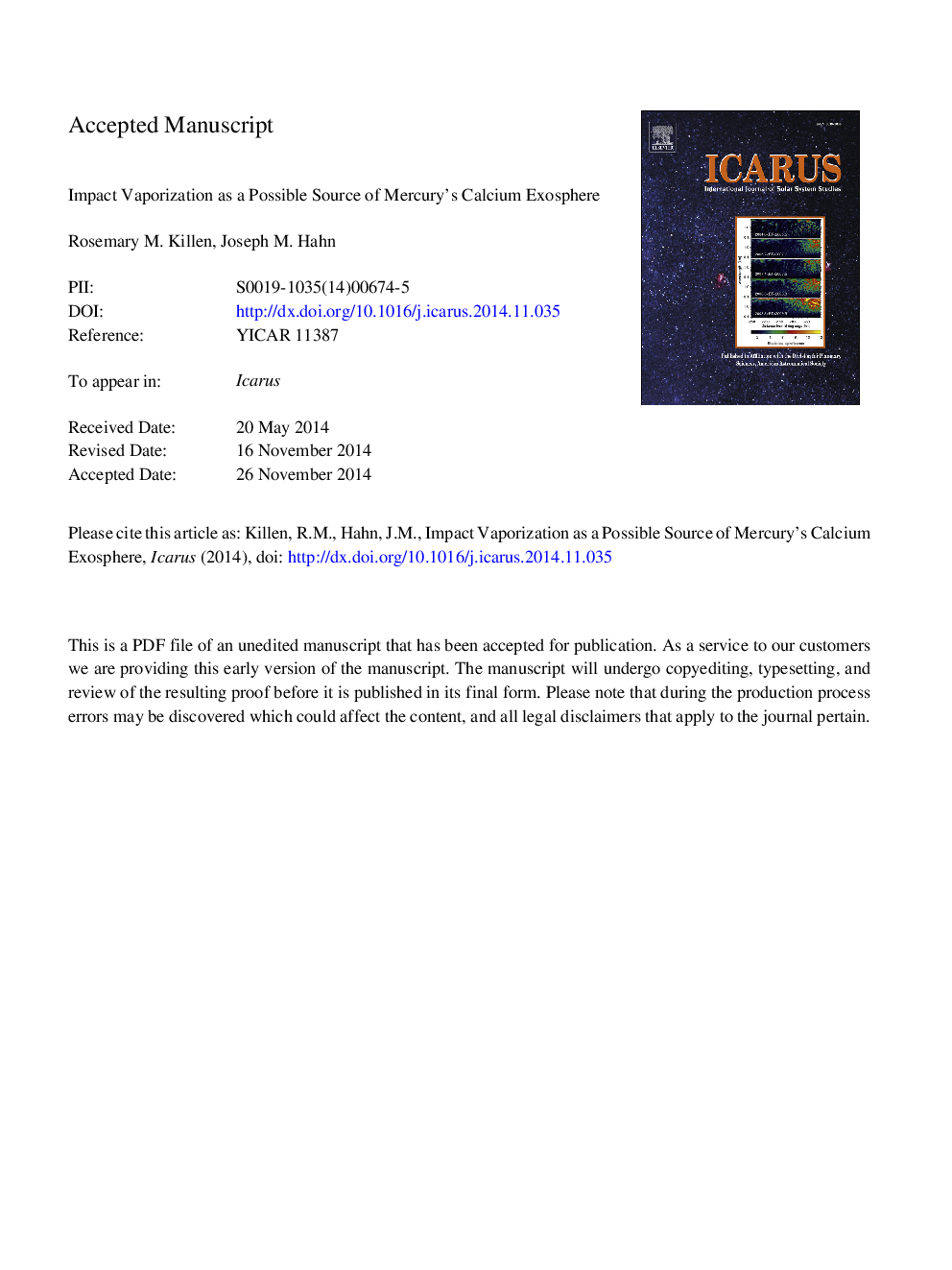| Article ID | Journal | Published Year | Pages | File Type |
|---|---|---|---|---|
| 8136781 | Icarus | 2015 | 26 Pages |
Abstract
Mercury's calcium exosphere varies in a periodic way with that planet's true anomaly. We show that this pattern can be explained by impact vaporization from interplanetary dust with variations being due to Mercury's radial and vertical excursions through an interplanetary dust disk having an inclination within 5 degrees of the plane of Mercury's orbit. Both a highly inclined dust disk and a two-disk model (where the two disks have a mutual inclination) fail to reproduce the observed variation in calcium exospheric abundance with Mercury true anomaly angle. However, an additional source of impacting dust beyond the nominal dust disk is required near Mercury's true anomaly (ν) 25° ± 5°. This is close to but not coincident with Mercury's true anomaly (ν = 45°) when it crosses Comet 2P/Encke's present day orbital plane. Interestingly, the Taurid meteor storms at Earth, which are also due to Comet Encke, are observed to occur when Earth's true anomaly is ±20 or so degrees before and after the position where Earth and Encke orbital planes cross. The lack of exact correspondence with the present day orbit of Encke may indicate the width of the potential stream along Mercury's orbit or a previous cometary orbit. The extreme energy of the escaping calcium, estimated to have a temperature >50,000 K if the source is thermal, cannot be due to the impact process itself but must be imparted by an additional mechanism such as dissociation of a calcium-bearing molecule or ionization followed by recombination.
Related Topics
Physical Sciences and Engineering
Earth and Planetary Sciences
Space and Planetary Science
Authors
Rosemary M. Killen, Joseph M. Hahn,
